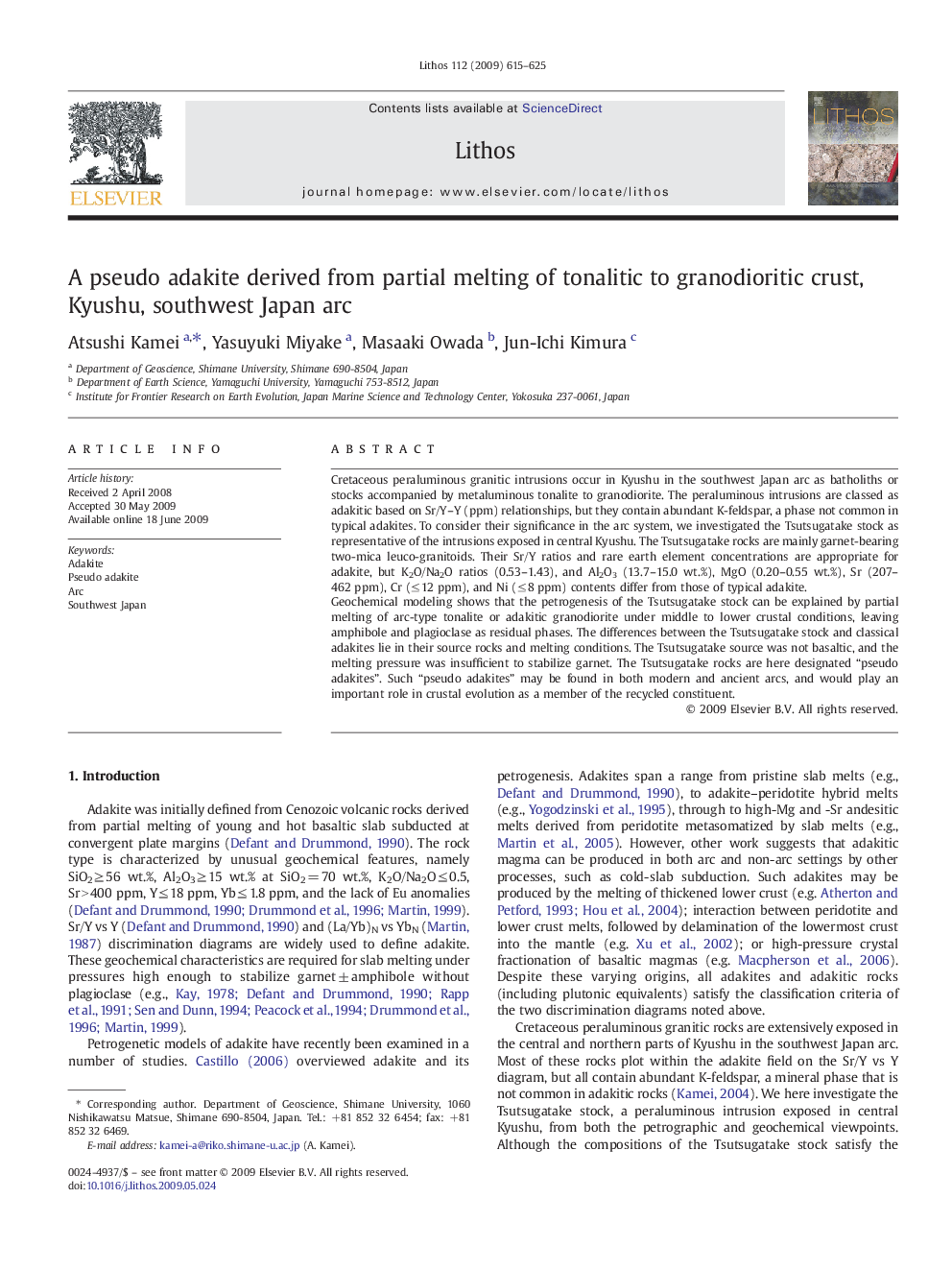| Article ID | Journal | Published Year | Pages | File Type |
|---|---|---|---|---|
| 4717097 | Lithos | 2009 | 11 Pages |
Cretaceous peraluminous granitic intrusions occur in Kyushu in the southwest Japan arc as batholiths or stocks accompanied by metaluminous tonalite to granodiorite. The peraluminous intrusions are classed as adakitic based on Sr/Y–Y (ppm) relationships, but they contain abundant K-feldspar, a phase not common in typical adakites. To consider their significance in the arc system, we investigated the Tsutsugatake stock as representative of the intrusions exposed in central Kyushu. The Tsutsugatake rocks are mainly garnet-bearing two-mica leuco-granitoids. Their Sr/Y ratios and rare earth element concentrations are appropriate for adakite, but K2O/Na2O ratios (0.53–1.43), and Al2O3 (13.7–15.0 wt.%), MgO (0.20–0.55 wt.%), Sr (207–462 ppm), Cr (≤ 12 ppm), and Ni (≤ 8 ppm) contents differ from those of typical adakite.Geochemical modeling shows that the petrogenesis of the Tsutsugatake stock can be explained by partial melting of arc-type tonalite or adakitic granodiorite under middle to lower crustal conditions, leaving amphibole and plagioclase as residual phases. The differences between the Tsutsugatake stock and classical adakites lie in their source rocks and melting conditions. The Tsutsugatake source was not basaltic, and the melting pressure was insufficient to stabilize garnet. The Tsutsugatake rocks are here designated “pseudo adakites”. Such “pseudo adakites” may be found in both modern and ancient arcs, and would play an important role in crustal evolution as a member of the recycled constituent.
